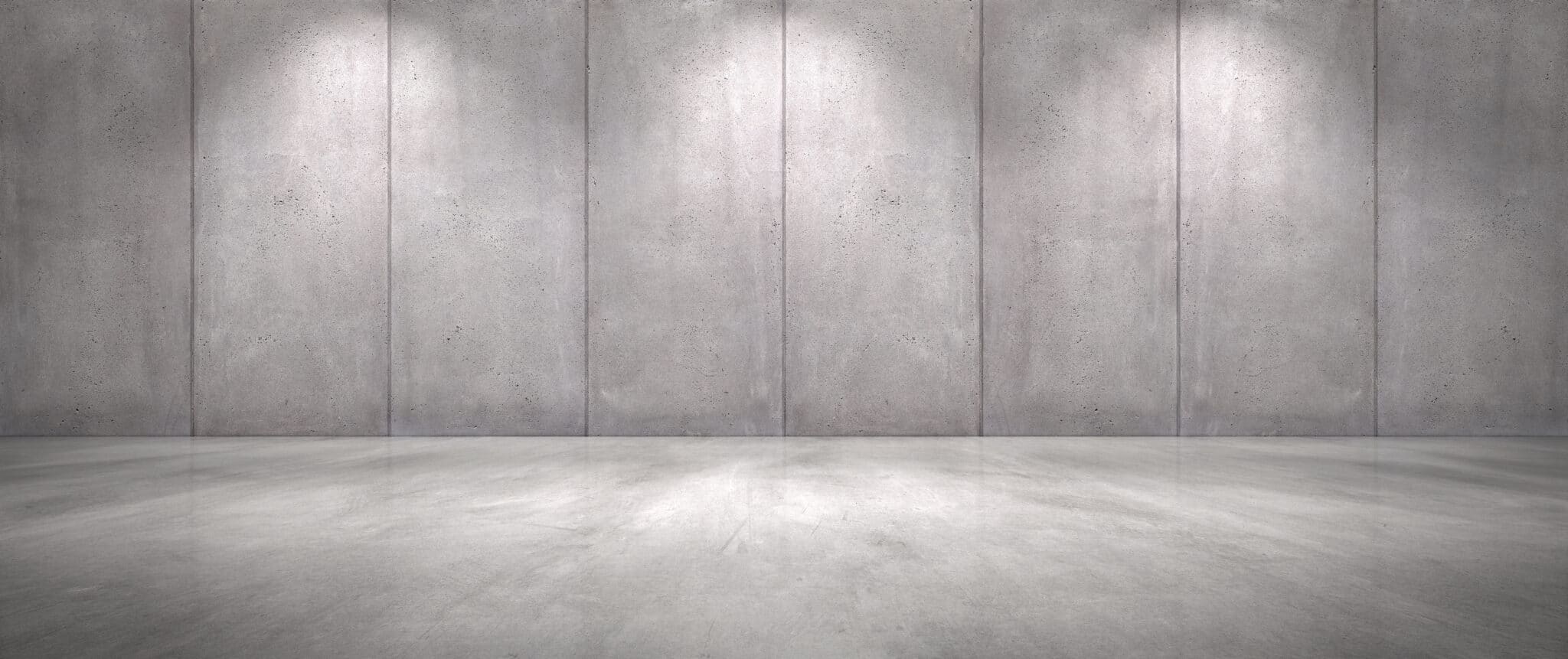
There are several things you should know about cement flooring before installing it. First of all, the water used for concrete flooring must be pure and free from contaminants. Generally, potable water is fine, but it is better to test it for conformity with IS 456:l 964 before using it for concrete flooring. You should also choose a hard-tough aggregate to give your flooring abrasion resistance. The ratio of water to cement in concrete flooring is very important for durability and wear resistance.
The Durability and Resilience of Concrete Flooring
Concrete floors, known for their exceptional durability and resilience, are an excellent choice for both residential and commercial settings. Their inherent strength allows them to withstand heavy foot traffic, furniture, and even vehicular load without showing any signs of wear and tear. Unlike other flooring options that may require frequent repairs or replacements, concrete’s robustness ensures a longer lifespan, reducing long-term costs. Additionally, the surface is resistant to scratches, dents, and stains, making it particularly beneficial in areas prone to spills and high traffic.
In terms of maintenance, concrete floors are relatively easy to clean and maintain. Regular sweeping and occasional mopping are usually sufficient to keep the surface looking clean and polished. Unlike carpet or hardwood floors, concrete does not trap dust, allergens, or pet dander, making it a more hygienic choice for those with allergies or respiratory issues. Furthermore, concrete floors can be sealed to enhance their resistance to moisture, making them suitable for areas such as kitchens, bathrooms, and basements.
Concrete floors offer a wide range of design possibilities, allowing homeowners and business owners to customize their space according to their preferences. They can be stained, painted, or stamped to mimic the appearance of other materials such as wood, tile, or natural stone. This versatility makes concrete floors a popular choice for those who want the look of expensive materials without the high cost. Additionally, concrete floors can be polished to a high gloss finish, creating a sleek and modern aesthetic.
In terms of sustainability, concrete floors are an environmentally friendly option. Concrete is made from abundant natural resources such as limestone, clay, and water, and does not deplete non-renewable resources. Furthermore, concrete floors have a long lifespan, reducing the need for frequent replacements. Concrete also has excellent thermal properties, which can help reduce energy consumption and lower heating and cooling costs.
Concrete floors are also known for their fire resistance. Concrete does not burn or emit toxic fumes when exposed to fire, making it a safe choice for both residential and commercial buildings. This fire resistance can provide valuable time for occupants to evacuate in the event of a fire and can help prevent the spread of flames to other areas of the building. For further information on flooring durability, visit the National Flooring Association’s page on material resilience: National Flooring Association – Material Resilience.
Enhancing Home Aesthetics with Concrete Flooring
Gone are the days when concrete was merely a dull and functional surface. Nowadays, it presents a plethora of aesthetic possibilities, encompassing a wide array of colors, textures, and finishes. Stained concrete can imitate the appearance of natural stone, tiles, or even wood, offering a sophisticated and versatile aesthetic for any residence. Polished concrete floors provide a sleek and contemporary look, while stamped designs can produce distinctive and intricate patterns. This adaptability empowers homeowners to customize their flooring according to their unique style preferences, ensuring that their home truly reflects their personal taste.
In addition to its aesthetic appeal, concrete also boasts numerous practical benefits. It is highly durable and long-lasting, capable of withstanding heavy foot traffic and resisting damage from everyday wear and tear. Furthermore, concrete is a low-maintenance option, requiring minimal effort to keep it looking clean and pristine. With regular sweeping and occasional mopping, concrete floors can maintain their beauty and functionality for many years to come. Additionally, concrete is an excellent choice for those seeking energy efficiency, as its thermal mass properties help regulate indoor temperatures, reducing the need for excessive heating or cooling.
When it comes to installation, concrete offers a relatively quick and straightforward process. Skilled professionals can efficiently pour and level the concrete, ensuring a smooth and even surface. The curing time is relatively short, allowing homeowners to enjoy their new floors in a timely manner. Additionally, concrete can be installed over existing surfaces, eliminating the need for costly and time-consuming demolition. This versatility makes concrete an attractive option for both new construction projects and renovations.
Moreover, concrete is an environmentally friendly choice. It is composed of natural materials, such as cement, aggregates, and water, which are readily available and sustainable. Concrete also has a long lifespan, reducing the need for frequent replacements and minimizing waste. Additionally, concrete can be recycled and reused, further reducing its environmental impact. By choosing concrete for their flooring needs, homeowners can contribute to a greener and more sustainable future.
In terms of cost, concrete offers excellent value for money. Compared to other flooring options, such as hardwood or tile, concrete is often more affordable to install and maintain. Its durability and longevity also contribute to long-term cost savings, as homeowners can avoid the expenses associated with frequent repairs or replacements. Furthermore, concrete’s versatility allows for various customization options, accommodating a range of budgets and design preferences. For ideas on flooring aesthetics, the American Society of Interior Designers provides a wealth of resources: American Society of Interior Designers – Flooring Aesthetics.
Health and Environmental Benefits of Concrete Flooring
Concrete flooring, with its practicality and aesthetic appeal, is not only a wise choice but also an environmentally friendly and health-conscious one. This sustainable material can be created from recycled materials and can be recycled itself at the end of its life cycle, reducing waste. Moreover, it does not harbor allergens, dust mites, or mold, making it an excellent option for individuals with allergies or asthma. Additionally, concrete floors contribute to better indoor air quality as they do not emit volatile organic compounds (VOCs) like some synthetic floor coverings.
Concrete flooring is also known for its durability and longevity. It can withstand heavy foot traffic and is resistant to scratches, stains, and water damage. This makes it an ideal choice for high-traffic areas such as kitchens, bathrooms, and commercial spaces. Furthermore, concrete floors can be customized with various finishes and colors to suit any design aesthetic, from modern and minimalist to rustic and industrial.
In terms of maintenance, concrete flooring is relatively easy to clean and maintain. Regular sweeping and mopping are usually sufficient to keep it looking clean and fresh. Unlike carpet or hardwood floors, concrete does not require regular refinishing or resealing. This not only saves time and effort but also reduces the need for harsh chemicals and cleaners.
From an environmental perspective, concrete flooring has several advantages. As mentioned earlier, it can be made from recycled materials, reducing the demand for new resources. Additionally, concrete has a high thermal mass, which means it can absorb and store heat from the sun, reducing the need for artificial heating. This can lead to energy savings and a reduced carbon footprint. To learn more about environmentally friendly flooring options, visit the Green Building Council’s website: Green Building Council – Eco-Friendly Flooring.
Cost-Effectiveness of Concrete Flooring
When it comes to flooring options, concrete stands out as a cost-effective choice. Its installation cost is often lower compared to other high-end materials, and its durability leads to lower maintenance and replacement expenses over time. Additionally, concrete’s thermal properties contribute to energy savings by retaining heat in the winter and staying cool in the summer, potentially reducing heating and cooling costs. These factors make concrete flooring a wise economic choice for both homeowners and business owners who are conscious of their budget.
Concrete flooring offers a range of benefits that make it an attractive option. Not only is it cost-effective, but it also provides durability and longevity. With its ability to withstand heavy foot traffic and resist wear and tear, concrete flooring requires minimal maintenance and replacement. This means that homeowners and business owners can save money in the long run, as they won’t have to invest in frequent repairs or replacements. Additionally, concrete’s thermal properties contribute to energy efficiency, further reducing expenses.
In addition to its economic advantages, concrete flooring offers versatility in terms of design and aesthetics. With various finishes and colors available, concrete can be customized to suit any style or preference. Whether it’s a sleek and modern look or a more rustic and natural appearance, concrete can be transformed to meet the desired aesthetic. This flexibility allows homeowners and business owners to create unique and visually appealing spaces that reflect their personal taste and brand identity.
Concrete flooring is also known for its durability and resilience. It can withstand heavy loads and is resistant to scratches, stains, and moisture. This makes it an ideal choice for high-traffic areas such as commercial spaces, warehouses, and garages. Concrete’s durability ensures that the flooring will last for many years without the need for frequent repairs or replacements. This not only saves money but also reduces the inconvenience and disruption that can come with flooring maintenance.
Furthermore, concrete flooring offers excellent thermal properties. It has the ability to retain heat in colder months, making it a cozy and comfortable option for homes and businesses. On the other hand, concrete stays cool in the summer, providing relief from the heat and potentially reducing the need for excessive air conditioning. This energy-saving feature can lead to significant cost savings on heating and cooling expenses, making concrete flooring an environmentally friendly choice as well. For more insights on flooring costs and savings, visit the Economic Planning Institute’s page on building materials: Economic Planning Institute – Flooring Costs.

Concrete Flooring: Versatility in Application
Concrete’s adaptability extends beyond residential homes to commercial spaces, industrial facilities, and outdoor areas. Its ability to be customized in terms of strength, finish, and color makes it suitable for a wide range of applications. In commercial settings, concrete can withstand heavy machinery and constant foot traffic, showcasing its durability. For industrial use, it can be engineered to resist chemicals and heavy loads, ensuring its longevity. Outdoors, concrete is commonly used for patios, walkways, and driveways, highlighting its versatility in different environments.
Concrete’s versatility extends to its applications in residential homes, commercial spaces, and outdoor areas. In residential settings, it can be used for foundations, walls, and floors, providing a solid and durable structure. In commercial spaces, concrete can be used for flooring, walls, and countertops, offering a sleek and modern aesthetic. Outdoors, concrete can be used for various landscaping features, such as retaining walls, steps, and decorative elements, adding both functionality and visual appeal to the space.
Concrete’s strength and durability make it an ideal choice for industrial facilities, such as warehouses, factories, and manufacturing plants. It can withstand heavy machinery, constant foot traffic, and the weight of stored materials. Additionally, concrete can be engineered to resist chemicals, ensuring a safe and reliable environment for workers. Its ability to withstand extreme temperatures and harsh conditions further enhances its suitability for industrial use.
In outdoor areas, concrete offers a wide range of possibilities. It can be used for patios, walkways, and driveways, providing a durable and low-maintenance surface. Concrete can also be used for outdoor seating areas, fire pits, and decorative elements, creating a functional and visually appealing outdoor space. Its ability to be customized in terms of color and finish allows for endless design possibilities, making concrete a versatile choice for outdoor projects. For examples of versatile flooring applications, the International Flooring Association offers extensive resources: International Flooring Association – Versatile Applications.
Maintenance and Care of Concrete Flooring
Maintaining concrete floors is a relatively simple and cost-effective process. To keep the surface clean, regular sweeping and occasional damp mopping are generally sufficient. It is recommended to use pH-neutral cleaning products for polished or stained concrete to preserve the finish. Depending on the level of foot traffic and the specific type of finish, periodic resealing may be necessary. By properly maintaining concrete floors, you can ensure that they retain their aesthetic appeal and functional qualities for many years.
When it comes to maintaining concrete floors, simplicity and cost-effectiveness are key. Regular sweeping and occasional damp mopping are typically all that’s needed to keep the surface clean. For polished or stained concrete, it’s important to use pH-neutral cleaning products to protect the finish. Depending on foot traffic and the specific type of finish, you may need to reseal the floor periodically. By following these maintenance practices, you can ensure that your concrete floors remain visually appealing and functional for years to come.
To maintain concrete floors, simplicity and cost-effectiveness are essential. Regular sweeping and occasional damp mopping are usually enough to keep the surface clean. If you have polished or stained concrete, it’s recommended to use pH-neutral cleaning products to preserve the finish. The need for periodic resealing will depend on foot traffic and the type of finish. By properly caring for your concrete floors, you can ensure their long-lasting beauty and functionality. For detailed maintenance tips, consult the Flooring Maintenance Professionals Association: Flooring Maintenance Professionals Association – Concrete Care.
Concrete floors
One of the best things about concrete floors is that they adapt well to the style and design of any home. They can be left exposed to accommodate a variety of aesthetics or stained to match the existing decor. Alternatively, you can cover your concrete slab with rugs or carpets for a more contemporary look. Concrete floors are durable and easy to clean, making them a smart choice for a modern home. Listed below are some of the benefits of concrete flooring.
Depending on the quality of concrete flooring you purchase, it can cost more than you originally planned. However, the time, effort, and experience involved are well worth the results. You may want to hire a professional to complete the project, or you can attempt it yourself. To choose a company, consider your budget and the level of expertise you want. Some companies even offer a free quote so you can get an idea of their pricing. You can also check whether they offer a warranty or a guarantee on their work.
When installed over bare soil, concrete is easily penetrated by moisture. In humid climates, the moisture can condense and grow as liquid, leading to mold growth in your home. This moisture can also freeze and expand, leading to cracking in your concrete floor. You should avoid using concrete flooring in areas where the temperature fluctuates rapidly and can crack. If you’re concerned about the appearance of your floor, you should consider using an alternative material.
Urethane cement
Industrial settings are particularly prone to chemical contamination, which makes urethane cement flooring an excellent solution. Originally designed for the food and beverage industry, urethane cement flooring provides increased protection from high-pressure washdowns and temperature variations. The material’s high-tech features reduce the risk of contamination and minimize the buildup of bacteria. Additionally, this flooring has safety features that make it ideal for various commercial settings.
In heavy machinery and high traffic areas, urethane cement is the ideal flooring solution. Its superior abrasion resistance and low-odor properties make it an excellent choice for these environments. Urethane cement flooring is also USDA approved, making it a safe option for operations that deal with hazardous chemicals. Listed below are some of the benefits of urethane cement flooring. Please contact Painters USA for a free consultation.
Unlike a traditional coating, urethane cement flooring has no specific thickness requirements. However, concrete floors have specific needs, depending on the environment and intended use. To apply urethane cement over concrete, you must first prepare the floor using a milling machine and remove the cap. Then, you can apply a thin layer of urethane cement over the top of the concrete, then topcoat it with any type of coating.
Urethane concrete
If you need a tough floor for your business, urethane concrete is a great option. This coating is applied to the concrete surface without needing a primer or a topcoat. It can be applied with a trowel or roller, which provides an even surface. Urethane cement flooring resists scratches better than other flooring systems. It can withstand cold and hot temperatures and will not expand or contract in polar regions.
Various urethane concrete flooring systems, ranging from a thin coat to a 1/2 inch urethane cement mortar, are available. These coatings are typically recommended for cement surfaces in good condition but have high impact and aesthetic requirements. Troweled urethane cement floors are often specified when the existing concrete floor has significant damage or heavy traffic. In these cases, urethane cement floor systems are often called cementitious mortar.
The installation of urethane floor materials differs for each application. Some systems require a grout coat over a textured surface. Once this coating has dried, it is grouted with quartz sand to provide slip resistance and grease oil protection. Urethane concrete is excellent for food and beverage facilities as it prevents the growth of dangerous microbes. It is also a great choice for pharmaceutical facilities and food and beverage establishments. It replaces expansive quarry tiles and low-performance ceramic tiles.
Fast stain
Applying a fast stain on cement flooring can add the finishing touches to any floor, including bare concrete floors. While a fast stain can cover a large surface area, you should consider the level of traffic on your flooring before determining the color. Several stains are available for concrete, including matte, semi-transparent, and glossy options. You must follow the manufacturer’s instructions to choose the best type for your project.
A fast stain on concrete can be a permanent finish. The amount of stain used will depend on the area to be stained, and the time it takes for the surface to dry. There are two types of concrete stains: acid-based formulas and water-based stains. Acid-based formulas have the advantage of being long-lasting and resistant to fading. The natural-looking finish results from a chemical reaction between the stain and the concrete.
Before applying a fast stain to your concrete floor, repair any visible cracks. Pourable concrete filler can be used to fill these spaces. Once the floor is repaired, apply a coat of paint stripper or caulk to prevent the stain from spreading. Wait a few days before applying a new stain to your floor. After 24 hours, it should look like the rest of the floor. After that, apply a second coat of stain to finish the process.
Water-cement ratio
The water-cement ratio for cement flooring is the proportion of water to cement used in a concrete mix. The lower the ratio, the less water is in the concrete mix. This ratio is important because it affects the strength of the concrete, as well as its moisture migration and permeability. Moreover, too much water in concrete can cause it to crack and crumble under service loads. The water to cement ratio is a key factor in the durability of cement flooring.
While a lower water-cement ratio is desirable for high-strength concrete, some types of flooring should be designed with higher w/cm. For example, if you pour an interior troweled concrete floor, you should consult the specification for maximum w/cm. However, a low ratio can also increase abrasion resistance, complicating the application of a high-quality surface finish.
The water to cement in concrete should be between 1:2 and 3 for floor screeds. The ratio should be 0-4mm for leveling screeds, while for heavy-duty screeds, you should replace a small portion of sand with six-team single-sized aggregates. A low ratio in cement floor screeds should be avoided since it could lead to cracking and surface delamination.
Decorative concrete
Decorative concrete cement flooring is a great option for homes that want a durable floor that won’t show stains. Concrete is a strong material and can resist heavy foot traffic while remaining cool to the touch. This is especially beneficial in warm climates, decreasing your air conditioning bills. Furthermore, concrete is non-porous and resists elements that drive up allergic reactions. This makes it easy to clean and maintain.
Another option is dyed concrete. The process is similar to painting but with a chemical densifier used to fill in the pores of the concrete. A grinder is then used to shave off the densifier and create a desired level of polish. This technique is particularly popular in homes with bare concrete floors. It can be used to create a unique design or a brand name. It has a high durability rating and is a great option for high-traffic areas.
Decorative concrete can be very versatile. You can choose various colors and designs to add visual oomph to your home. Some decorative concrete comes in various colors and designs, and you can even incorporate your favorite elements, including concrete dyes, acid stains, and stamping. Many decorative concrete installations integrate multiple techniques to create a unique look for your home or business. They can add an amazing amount of visual impact.
Key Considerations Choosing Concrete Flooring for Your Home in Metro Vancouver.
1. Reputation and Experience in the Industry
The reputation of a concrete flooring business is a crucial factor. Look for a company with a proven track record in the industry, evidenced by customer reviews, portfolio showcases, and years of experience. Experienced professionals are more likely to understand the nuances of different concrete flooring options, such as polished concrete, stained concrete, and decorative concrete. They can provide insights into the best choices for various settings, whether it’s for residential, commercial, or industrial purposes.
2. Range of Services and Customization Options
A business that offers a wide range of services, including installation, maintenance, and repair of concrete floors, is preferable. They should also provide customization options, such as different finishes (e.g., glossy, matte), colors, and textures, to suit diverse design preferences. Businesses that offer eco-friendly solutions, like sustainable concrete mixes or energy-efficient installation processes, are also worth considering, especially for environmentally conscious consumers.
3. Quality of Materials and Techniques
The quality of materials used in concrete flooring significantly impacts its durability, appearance, and maintenance needs. Ensure the business uses high-grade concrete and state-of-the-art installation techniques. Advanced methods like diamond-polishing for polished concrete floors or specialized staining techniques for colored concrete can make a substantial difference in the final result.
4. Cost and Value for Money
While cost is an important consideration, it should be weighed against the value offered. Cheaper options might lead to higher maintenance costs or a shorter lifespan of the flooring. Request detailed quotes from multiple businesses and compare them, considering not only the upfront costs but also the long-term value, such as durability and ease of maintenance.
5. Local Climate and Environmental Factors
The local climate and environmental conditions of your city can affect the performance and longevity of concrete floors. Businesses familiar with the local climate can recommend suitable concrete mixes and finishes that withstand specific environmental challenges, like high humidity, temperature fluctuations, or exposure to salt (in coastal areas).
6. Customer Service and Support
Excellent customer service is a marker of a reliable business. Look for companies that are responsive, communicative, and willing to address your concerns. Post-installation support, such as guidance on maintenance or warranties on workmanship, is also important.
7. Compliance with Local Regulations and Standards
Ensure the business complies with local building codes and industry standards. This compliance is not only a legal requirement but also a reassurance of safety and quality.
Choose Canadian Home Style for your Vancouver flooring projects.
Canadian Home Style is your family-owned and operated flooring retailer with a showroom in North Vancouver, BC. We provide full-service commercial and residential flooring solutions across the Lower Mainland with an extended warranty. We are proud members of the BC Floor Covering Association (BCFCA) and the National Wood Flooring Association (NWFA). In addition, we have won the Consumer’s Choice Awards back-to-back in 2021, 2022, 2023, and 2024 for our commitment to business excellence. We are considered the highest-rated flooring experts in Metro Vancouver. We pride ourselves on holding the highest standards in the flooring industry. To uphold our high standards, we have a strict policy of “not selling or displaying any products that we wouldn’t want in our own homes.” Before we select a product to feature, we carefully assess product quality, off-gassing, warranties, and responsible sourcing. Book now to visit our North Vancouver flooring showroom; we can help you choose the perfect floor for your home or business.
Our mission is to help homeowners create beautiful homes that reflect their lifestyles while reducing energy consumption and conserving resources. We do this by providing our clients with innovative products, services and education. Our vision is to become Canada’s leading sustainable flooring solutions provider. Our values include integrity, respect, honesty and transparency. These principles guide us as we strive to provide outstanding customer service.
We believe that our success depends on the success of our clients and their customers. We work hard to ensure our clients get the most out of their investments. Our team consists of highly skilled professionals who are experts in their field. They have years of experience working together and know what works and what doesn’t. They understand how to solve problems quickly and efficiently. We are committed to providing excellent customer service. We listen carefully to our client’s concerns and suggestions. We take these into account when planning and executing projects. We always strive to exceed expectations.
Key Choose Us?
1. Comprehensive Manufacturing Process: Canadian Home Style sources high-quality materials for its concrete flooring. They understand the importance of a robust manufacturing process that ensures durability and longevity. From selecting premium cement to integrating advanced additives, their attention to detail in the manufacturing phase sets the stage for superior flooring solutions.
2. Integration of Ceramic and Natural Rubber: In their quest for innovative and resilient flooring, Canadian Home Style often incorporates ceramic and natural rubber elements into their concrete floors. This unique combination enhances the durability of the flooring while providing a comfortable underfoot feel, especially valuable in spaces where standing for long periods is common.
3. Compatibility with Radiant Heating and Cooling Systems: Their concrete flooring works seamlessly with radiant heating and cooling systems. This compatibility ensures that your floors not only look good but also contribute to the overall energy efficiency and comfort of your space, making them ideal for regions with extreme temperatures.
4. Expertise in Texturizing and Aesthetic Choices: The company excels in offering a range of texturizing options, including the use of gritstone for added grip and a natural aesthetic. Their expertise extends to decorative concrete, where they blend art and functionality, offering options that range from minimalistic designs to more elaborate patterns, catering to diverse design preferences.
5. Application of High-Quality Concrete Sealers: To protect and enhance the longevity of their flooring, Canadian Home Style uses top-tier concrete sealers. These sealers safeguard the floor against moisture, stains, and wear, ensuring that the beauty of the floor is preserved for years.
6. Utilization of Self-Leveling Concrete: For uneven surfaces, their use of self-leveling concrete is a game-changer. This approach guarantees a perfectly flat and smooth surface, which is crucial for the optimal performance of concrete floors, especially in high-traffic areas.
7. Addressing the Pros and Cons: Canadian Home Style is transparent about the pros and cons of concrete flooring. They provide detailed consultations to help clients understand how concrete flooring will fit into their lifestyle and space, ensuring that customers make an informed decision.
8. Achieving the Perfect Balance: Their expertise lies in striking the perfect balance between functionality and aesthetics. Whether it’s incorporating radiant heating for comfort or selecting the right texturizing technique for slip resistance, they ensure that every aspect of the flooring serves a purpose.
9. Focus on Minimalism and Reflectance: For clients who prefer a minimalist aesthetic, Canadian Home Style offers concrete flooring options that epitomize simplicity and elegance. Additionally, their polished concrete options with high reflectance rates contribute to brighter, more energy-efficient spaces.
Services We Offer:
Main Areas of Service in British Columbia:
- Vancouver
- North Vancouver
- West Vancouver
- Burnaby
- Coquitlam
- Squamish
- Whistler
Did you miss our previous article…
https://canadianhomestyle.com/flooring/rustic-hardwood-floors/





